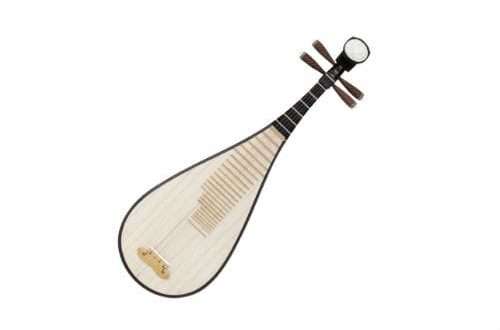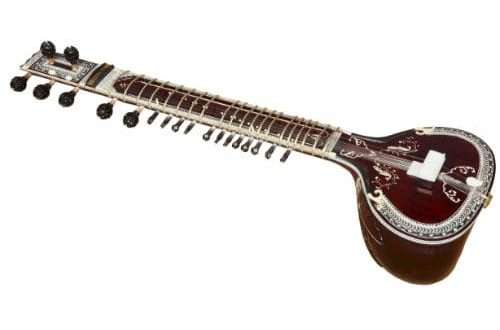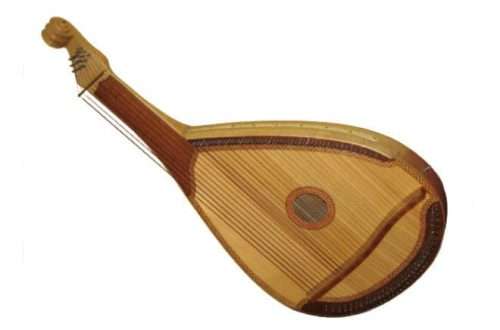
Mandolin: general information, composition, types, use, history, playing technique
The mandolin is one of the most famous European stringed instruments, which remains popular in the XNUMXst century.
What is a mandolin
Type – stringed musical instrument. Belongs to the class of chordophones. Belongs to the lute family. The birthplace of the instrument is Italy. There are many national variants, but the most widespread are the Neapolitan and Lombard models.
Tool device
The body acts as a resonator and is attached to the neck. The resonating body may look like a bowl or a box. Traditional Italian models have a pear-shaped body. Approximately in the middle of the case, a sound hole is cut out. The number of frets on the neck is 18.
At one end, the strings are attached to the tuning peg at the top of the neck. The strings are stretched over the entire length of the neck and the sound hole, being fixed on the saddle. The number of strings is 8-12. The string is usually made of metal. A common tuning is G3-D4-A4-E5.
Due to the design features, the gaps between the decay of sounding sounds are shorter than with other stringed instruments. This allows musicians to effectively use the tremolo technique – the rapid repetition of one note.
Types of mandolins
The most popular are the following types of mandolins:
- Neapolitan. The number of strings is 8. It is tuned like a violin in unison. Used in academic music.
- Milanskaya. Differs in the increased number of strings up to 10. Double strings.
- Picolo. The difference is the reduced size. The distance from the nut to the bridge is 24 cm.
- Octave mandolin. A special system makes it sound an octave lower than the Neapolitan one. Mensur 50-58 cm.
- Mandocello. The appearance and size is similar to a classical guitar. Length – 63-68 cm.
- Luta. Modified version of Mandocello. It features five pairs of strings.
- Mandobas. The instrument combines the features of a mandolin and double bass. Length – 110 cm. Number of strings 4-8.
Following the example of the electric guitar, the electric mandolin was also created. It is characterized by a body without a sound hole and an installed pickup. Some models have an extra string. Such versions are called extended range electric mandolins.
History
In the Trois-Freres cave, rock paintings have been preserved. The images date back to around 13 BC. They depict a musical bow, the first known stringed instrument. From the musical bow came the further development of the strings. With the increase in the number of strings, harps and lyres appeared. Each string became responsible for individual notes. Then the musicians learned to play in dyads and chords.
The lute appeared in Mesopotamia in the XNUMXth century BC. Ancient lutes were made in two versions – short and long.
The ancient musical bow and lute are distant relatives of the mandolin. This fact causes the lute to be distinguished by a less elaborate design. The country of origin of the mandolin is Italy. The forerunner of its appearance was the invention of the soprano lute.
The mandolin first appeared in Italy as a mandala. Approximate time of appearance – XIV century. Initially, the instrument was considered a new model of the lute. Due to further design modifications, the difference with the lute became significant. The mandala received an extended neck and an enlarged scale. The length of the scale is 42 cm.
Researchers believe that the instrument received its modern design in the XNUMXth century. The inventors are the Vinacia family of Neapolitan musicians. The most famous example was created by Antonio Vinacia at the end of the XNUMXth century. The original is preserved in the UK Museum. A similar instrument was also created by Giuseppe Vinacia.

The inventions of the Vinaccia family are called the Neapolitan mandolin. Differences from older models – improved design. The Neapolitan model is gaining great popularity towards the end of the XNUMXth century. Starts mass serial production in Europe. Wishing to improve the instrument, musical masters from different countries are taken to experiments with the structure. As a result, the French create an instrument with reverse tension, and in the Russian Empire they invent a variant with a double top deck that improves the sound.
With the development of popular music, the popularity of the classical Neapolitan model is declining. In the 30s, the flat-bodied model became widespread among jazz and Celtic players.
Using
The mandolin is a versatile instrument. Depending on the genre and composer, it can play a solo, accompanying and ensemble role. Initially used in folk and academic music. Compositions composed by the people received a second life with the advent of popular folk music.
British rock band Led Zeppelin used a mandolin when recording the 1971 song “The Battle of Evermore” for their fourth album. The instrumental part was played by guitarist Jimmy Page. According to him, he first picked up a mandolin and soon composed the main riff of the song.
American rock band REM recorded their most successful single “Losing My Religion” in 1991. The song is notable for its lead use of the mandolin. The part was played by guitarist Peter Buck. The composition took the 4th position in the top Billboard and received several Grammy awards.
The Soviet and Russian group “Aria” also used the mandolin in some of their songs. Ritchie Blackmore of Blackmore’s Night uses the instrument on a regular basis.
How to play the mandolin
Before learning to play the mandolin, an aspiring musician must decide on the preferred genre. Classical music is played with Neapolitan-style models, while other varieties will do for popular music.
It is customary to play the mandolin with a mediator. Picks vary in size, thickness and material. The thicker the pick, the richer the sound will be. The disadvantage is that the Play is difficult for a beginner. Thick picks require more effort to hold.
When playing, the body is put on its knees. The neck goes up at an angle. The left hand is responsible for holding the chords on the fretboard. The right hand picks the notes from the strings with a plectrum. Advanced playing techniques can be learned with a music teacher.





